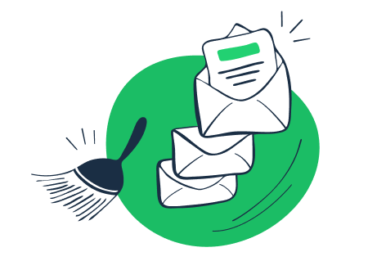The Importance of Cleaning Email Lists Regularly

In the world of email marketing, maintaining a clean email list is crucial for ensuring the success of your campaigns. Regularly cleaning your email list helps improve deliverability, enhance engagement, and maintain a good sender reputation. In this article, we’ll explore the importance of cleaning email lists and provide best practices to keep your email marketing efforts effective.
1. Enhanced Email Deliverability
One of the primary reasons to regularly clean your email list is to improve your email deliverability rates. Email service providers (ESPs) monitor user engagement and the quality of your email list. If you consistently send emails to invalid or inactive addresses, your sender reputation may suffer, resulting in your emails landing in the spam folder.
2. Increased Engagement Rates
Cleaning your email list helps ensure that you are sending your campaigns to engaged and interested subscribers. When you remove inactive subscribers, you can expect higher open and click-through rates, as your emails reach people who genuinely want to receive your content.
3. Improved Sender Reputation
Maintaining a good sender reputation is essential for successful email marketing. If a significant number of your emails bounce or go unopened, ESPs may flag your account as a spammer. Regularly cleaning your email list can help prevent this and ensure your emails are delivered to the intended recipients.
4. Cost Efficiency
Many email marketing platforms charge based on the number of subscribers in your list. By cleaning your list and removing inactive or invalid email addresses, you can reduce costs and ensure that you are only paying for engaged subscribers.
5. Better Insights and Analytics
A clean email list provides more accurate data for your email marketing campaigns. When you eliminate inactive subscribers, your metrics will more accurately reflect the performance of your emails, allowing you to make better-informed decisions for future campaigns.
How to Clean Your Email List
1. Identify Inactive Subscribers
Start by identifying subscribers who have not engaged with your emails in a specified timeframe, typically six months to a year. Look for those who haven’t opened or clicked on any of your emails during that period.
2. Use a Re-Engagement Campaign
Before removing inactive subscribers, consider sending a re-engagement email to win them back. This email should encourage them to confirm their interest in remaining on your list. Include an enticing offer or valuable content to prompt action.
Example Re-Engagement Email:
Subject: We Miss You! Come Back for a Special Offer!
Hi [Subscriber’s Name],
We noticed that you haven’t opened our emails in a while, and we miss you!
As a token of our appreciation, here’s a special offer just for you: 20% off your next purchase!
To continue receiving our updates and offers, please click the button below:
If we don’t hear from you, we’ll remove you from our list. We hope to see you again soon!
3. Remove Hard Bounces
Hard bounces occur when an email cannot be delivered due to a permanent reason, such as an invalid email address. Regularly check your email reports and remove these addresses immediately to maintain your sender reputation.
4. Implement a Regular Cleaning Schedule
Establish a routine for cleaning your email list. Consider reviewing your list every 3 to 6 months to identify and remove inactive subscribers, hard bounces, and other invalid addresses.
Conclusion
Regularly cleaning your email lists is an essential practice for maintaining a successful email marketing strategy. By ensuring that your emails reach engaged and interested subscribers, you’ll improve deliverability, enhance engagement, and protect your sender reputation. Make list cleaning a priority, and watch your email marketing efforts yield better results!
